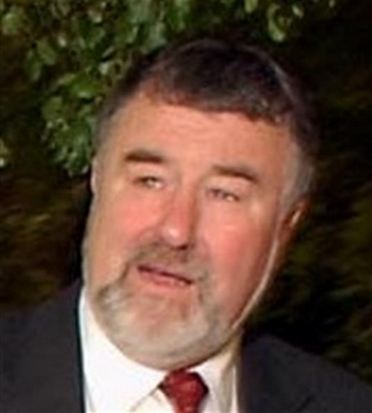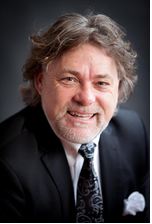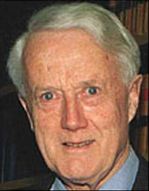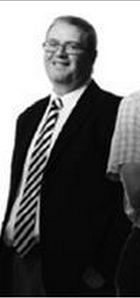On Saturday March 18,1989 an article appeared in the Gisborne Herald penned by none other than Jenni McManus’s friend and co-conspirator Marianne Spence. Spence was reporting on the case of Gisborne Glass verses the Brothers:
A JUDGEMENT in favour of a Gisborne Businessman for over $13’000.00 was delivered by Mr Justice Robertson in the Gisborne High Court yesterday.
The Judgement was given in favour of Mr John McLaughlin against [the brothers].
The money was the balance owed by the [brothers] for glazing and associated installation of glass at the [brothers] nightclub in Peel Street.
A notice of opposition was filed by the [brothers] and the hearing was held in Gisborne this week.
Mr Denys Barry appeared for Mr McLaughlin whilst the [brothers were represented by Mr Stewart Webster, a Hawkes Bay solicitor. Mr Justice Robertson said after hearing and seeing the witnesses give evidence, he preferred the evidence of Mr McLaughlin.
“He was transparently honest and totally realistic”
He said after hearing the [brothers] give evidence he was left with an air of total unreality. Mr Robertson said the [brothers] were full of optimistism and had they given structure and form they could have done some wonderful things.
There’s just one small problem with Marianne Spence’s article and in fact Robertson’s spurious judgement and we here at Laudafinem have obtained the evidence; copies of taped telephone conversations that prove both the article and judgement wrong. The claim had in fact been fabricated by the purported creditor John McLaughlin. Did Justice Robertson get it wrong; in short yes. Questions then remain, how and why?
“He was transparently honest and totally realistic”.
(Click to listen to John McLaughlin’s unwitting admission to the conspiracy)
The remainder of Spence’s article was by design an artistic fabrication on Spences part, designed to colour the events; she had a very bad habit of doing so. In yet another example of Spences work; by employing the label “Night Club” she had set out to intentionally transform a top-end restaurant into something more synonymous with a criminal enterprise for her readers consumption, yet another figment of a very malevolent imagination and part of a wider criminal conspiracy designed by Detective’s Malcolm John Thomas and Stanley Matthew Willcox.
From the out-set and by design, Spence had used journalistic spin to encourage the belief that the brothers were a criminal gang, something akin to the Cosa Nostra, thus on behalf of her corrupt local police mates creating the hatred required to destroy the families reputation and credibility amongst the local Gisborne audience the all important its jury pool.
Just like her her fellow journalist, Jenni McManus, Spence had twisted the truth beyond all recognition – she was however no novice – the Gisborne Herald was somewhat renowned for it’s practice of printing highly prejudicial articles for their local bent cop mates, culminating, eventually, in the paper being charged with contempt in the mid 1990’s, articles designed specifically with the sole intention of poisoning the local jury pool:
[Gisborne Herald Co Ltd v Solicitor-General [1995] 3 NZLR 563, 569 CA].
Justice Robertson may have had no idea of what had just transpired in his court, he was nowhere near as wily as his brother Justice, Thorpe J, who had slammed yet another of the many false claims, Hi-lite Industries spurious application for summary judgement, which also had its origins in a fraudulent claim, again designed by the local cops who had forged documents in support.
McLaughlin and his solicitor Denys Barry’s corrupt and duplicitous behaviour therefore went unchallenged – But then again perhaps not, as Chief Inspector Ratahi had said – perhaps the Judge had already been “spoken too”, as was common practice with the police and courts in Gisborne during the 1980’s and 90’s
Just as with the Hi-Lite case McLaughlin’s claim was false a total fabrication designed by Denys Barry, a solicitor with the law firm Woodward Isles. Woodward Isles had always been wearing two caps, in a serious conflict of interest they were also the local crown solicitors, and Denys Barry the very same Woodward Isles solicitor that had been conspiring with Steve Dimery, and the bent cops, headed up by Detectives Malcolm John Thomas and Stanley Matthew Willcox in the attempted theft of the Hi-Lite equipment. Denys Barry had used his contacts and this insider position to manipulate events in court to McLaughlin’s advantage.
The massive volume of people Thomas had conspired with and the other naive parties he inveigled along the way would have challenged the reality of even the most experienced investigator.
A fact that is not lost on us – we have shown a number of retired senior Australian Police officers the evidence the brothers had collected. Whilst having experience of police corruption they too were totally gob-smacked at the scale of Thomas’s brazen offending, the immunity he apparently enjoyed, granted by senior police officers, and the stupidity and complicity of the New Zealand Press – a complicity that on the face of it has extended to the present day.
Most New Zealander’s would have had little if any experience of how corrupt cops operated in the 1980 -90’s, and the lengths to which senior police and bureaucrats would go so as to conceal their colleagues criminal offending – the public are only now beginning to glimpse a cancer that has devoured a police force, many in the judiciary, the polity and many of its bureaucrats .
The brothers however where not your average citizens. They had previously been the victims of police malevolence and whilst this new round was well beyond even their experience, the insight and nose for corruption that they had developed, subsequent to those past encounters, would prove to be remarkably accurate.
Had Robertson J genuinely stated in isolation that he was “left with an air of total unreality” given what had been going on behind closed doors, he would have been right on the money, but of course as with everything else penned by Spence she had by design fabricated her work and often removed context. What had happened was certainly beyond the average persons ability to comprehend – the shear scale and audacity of the corruption was extraordinary.
Both John McLaughlin and his solicitor, Denys Barry, were fully cognisant of the fact that the brothers did not personally owe any money and that whilst the debt existed it was with a limited liability company. McLaughlin had had little to do with the two brothers he was accusing, hence McLaughlin’s failure to recognise their voices when they called him employing a ruse to evidence the truth of what had occurred. McLaughlin and Barry’s strategy was simple enough, first destroy the brothers reputation, their credibility and then lie on oath. They had nothing to loose and willingly joined the Thomas’s and Willcox’s plan to bring the brothers and their business operations down – without cash flow the brothers were sitting ducks.
In August 1988 Thomas had already started contacting many of the local creditors, John McLaughlin was amongst the very first. We have taped evidence that a clandestine meeting was held at the offices of Woodward Isles in early August 1988, amongst those attending were the owners of Gisborne Glass, Vogue Kitchens, Gisborne Carpets.
In a later taped telephone conversation with the owners of Vogue Kitchens, using what had by now become the aforementioned ruse (Jonathan Parker, repossession agent), it was confirmed that during the course of the meeting details of the planned conspiracy were discussed, agreed upon and then set in motion.
Detective Thomas, having now formed a pact with the local creditors and Marianne Spence then embarked on a wider campaign of recruitment, telephoning Hi-lite Industries in Christchurch, Hobart Berkel, CFC Finance, Fisher and Paykel – (Panasonic/Ramsa) and Titan Metal Industries in Auckland. Thomas and Willcox’s plan was simple. they incited all of the creditors to repossess the equipment they had supplied. Thomas then gave each and everyone of them the contact details for his mate Steven John Dimery, now a private investigator/repossession agent. Dimery had previously been a Detective Sergeant in the Gisborne CIB, a personal friend of Malcolm Thomas’s. On one of the first purported repossessions Thomas organised for the alarms to be ignored and the locks to be drilled out then replaced. Thomas then keeping a set of keys for Dimery and himself, which were held at Brian McBreen’s offices.
Thomas gave the creditors his personal guarantee that they could just go in and get the gear and that he and Dimery would be there to assist and if necessary prevent the brothers intervention by arresting them.
McLaughlin however was not able to repossess windows, so he and Denys Barry set out to, successfully, mislead Justice Robertson and the High Court. Part of Thomas’s plan, a strategy often employed by the Gisborne police, was to recruit the assistance of the local press – the same tactic was employed more recently by none other than bent Gisborne cop Laurie Naden, in another covert attempt aimed at demonizing his ex-son-in-law so as to have him expelled from the country.
Marianne Spence knew Laurie Naden, Malcolm Thomas and their bent CIB colleagues extremely well, she had been attending early morning police briefings for years and counted a number of the cops as personal friends and neighbours. Thomas and Spence then came up with the idea of recruiting the National press. Marianne Spence then telephoned Jenni McManus at the National Business Review in Auckland.
Spence gave McManus the incredible story of Mafia drug lords, gun running, violence, extortion and stand-over men, then supplied the contact details for Detective Malcolm Thomas and the co-conspirators.
Malcolm Thomas was the first cab of the rank. Malcolm Thomas verified everything that McManus had been lead to belive by Marianne Spence. This included advising McManus to be careful as the brothers were highly organised and violent criminals and that they would likely come after her. Thomas further advised McManus that they had given Marianne Spence a similar warning, which being local had persuaded Spence not to run with the story herself.
Thomas and Davidson then supplied McManus with a list of the purported convictions, with a particular spurious focus on the brothers alleged violent criminal history, which included falsely leading her to believe that one of the brothers had a collection of weapons, firearms that he was not afraid to use. They reinforced this fiction by giving McManus the incredible story of one of the brothers having been arrested whilst sitting in a local Park with a rifle, as McManus would later recount to Johnathan Egglestone; “firing off shots willy nilly”.
Thomas also supplied McManus with the contact details of Christchurch Detective Stanley Matthew Willcox. This is later confirmed in a taped telephone conversation, again employing a ruse, with Mr Chris Rennie the National Business Reviews man on the ground in Christchurch. According to Rennie McManus had spoken with Willcox; Rennie additionally confirmed that Willcox had supplied McManus with a dossier containing the information he had gathered on the family, which according to Rennie had been shown whilst in McManus’s office at the NBR in Auckland.
Mr Rennie also claimed to have been shown a photograph of the three brothers, taken outside the restaurant, at the same meeting. Rennie confirmed what the brothers had already acertained, that Marianne Spence of the Gisborne Herald had sent McManus the photograph in August 1988.
Interestingly Marianne Spence, also in a taped conversation, emphatically denied contacting McManus and supplying the photograph. The existence of this infamous photograph, however, was many years later, again, confirmed by the investigative reporter Mr John Hudson of 60 minutes fame. Hudson in 1997 claiming that it had subsequently been framed and hung in McManus’s office’s at the Newspaper, The Independent, in Auckland.
Much of the false information designed to incite McManus, supplied by Thomas, Davidson and Willcox; the allegations of Mafia, violence and stand-over tactics, was drawn from this same dossier that the bent detective Willcox had sent Thomas and Davidson in June 1987. The Dossier was not, however, an official police file. It had in fact been rejected by senior police during an application for the restaurants liquor license as a fiction – false information that senior police had labeled as malicious gossip rumour and hairsay in June – July of 1987. McManus, however, was not to know that – Neither was Phil Kitchin when he later relied on the same spurious material supplied by Willcox – once again given to him by Gisborne’s infamously bent constabulary.
McManus, as was the plan, then contacted the other locals starting with John McLaughlin of Gisborne Glass, then Ron Atkinson Eastland Energy’s financial controller, Paul Martens union organiser, Tum De Ridder local area manager Health Department amongst others. All of these co-conspirators confirmed what the bent cops had told McManus, each with their own harrowing tales of violence, threats, drugs and fears for their safety. By now McManus was putty and the brothers reputation and credibility was soon to be destroyed.
According to McManus McLaughlin was a particularly vociferous creditor, with tales of extraordinary violence and stories of having been threatened with firearms. McLaughlin would later confirm what McManus had said by giving the brothers who had telephoned him using a ruse, another incredible story of the Brothers having threatened to go out and bash his solicitor Denys Barry. Barry had, according to McLaughlin, in-turn threatened the brothers with a loaded shot gun – all quite incredible stuff.
In the same taped conversation McLaughlin admits that his dealings had not been with the brothers personally, but that Denys Barry had advised him to go after the brothers and bankrupt them. In another strange twist, McLaughlin also admits to having had a good relationship with the brothers, no problems or threats, and that they were in his words “Quite likable chaps”, very different to the “schooled” picture he had painted for the benefit of McManus – at the behest of Detective Thomas.
Many years later in 2001, Phillip Kitchin, a low rent journalist and associate of Jenni McManus and the bent cops in Gisborne was approached by police and asked to pen an article, again specifically designed to damage the brothers reputations and credibility. Kitchins article was yet again intentionally designed to colour the public’s perception of the brothers so as to counter a damning investigation and the subsequent report one of the brothers had produced, that would later see a police officer indicted for shooting a youth to death.
The purpose of Kitchin’s article is obvious, what would not be so obvious to the uninitiated reader was that the information that Kitchin relied on for his fictional piece as already said was in fact supplied by exactly the same bent cops, that had been responsible for the corruption in 1988, in yet another attempt to assist one of their gun happy police mates.
The spurious allegations, the quotes and events Kitchin recalls mirror exactly the content of various police files that existed in 1988 – obviously the bent Gisborne cops had been collecting more than banjo’s – amongst the cops trophies were the news articles penned by Spence, McManus and another local hack Bruce Johnstone
Of course Kitchin was in a predicament not that dissimilar to that of his mate Jenni McManus and the other low rent wannabe Bruce Johnstone of the Eastland Sun in 1988 – In fact unfortunately for Kitchin he had plagiarised the earlier spurious work of these same journalists with out even citing them.
Kitchin even quotes Marianne Spence, although he incorrectly attribute’s the words of Spence to Justice Robertson – complete with quotation marks in all the wrong places.
We very much doubt that McManus et al would now want the credit for that dark past and the criminally defamatory work they had penned at the behest of bent cops the likes of Malcolm John Thomas and Hemi “Hell Raiser” Hikawai.
Prior to Kitchin penning his fable in 2001 the brothers had been successful in their action against Registered Securities Limited (RSL) in 1999. It had, however been an up hill battle with corruption and incompetence evident in many of the senior jurists hearing the case, a volley of bias so blatant that each in turn had been forced to fall on their sword and recuse themselves.
Eventually, an honest man, Justice Sir David Tomkins, was pulled out of retirement, called in to preside over and settle the matter once and for all – but it had to be contained within the hearings allocated time – Sir David and his wife intended leaving as scheduled, sailing to Fiji, come hell or high water!.
On the the second day of the hearing, immediately after the morning break, Justice Tompkins was challenged by a brother leading the case for the family:
“Sir it has been brought to our attention that you were seen talking to Justice Robertson during the adjournment”
Disturbingly, Judge Bruce Robertson had suddenly and inexplicably shown up and was witnessed in what appeared to be a covert attempt to interfere with the court proceedings. Justice Tompkins took the challenge with good humour, acknowledging that the untoward event had been witnessed and the brothers obvious concern:
Mr XXXXXXXXXX it is not unnatural for a brother Judge to take an interest in proceedings and discuss them over a cup of tea
To which the brother immediately rejoined:
Or perhaps a chardonnay or two Sir, never the less it is of very serious concern to us!
Sir David Tompkins was of course, on the face of it, totally unaware of the past failures of Robertson J, which the brothers, for good reason, believed to be suspect; in the Gisborne Glass and various other matters. Obviously the outcome of the RSL matter, should it be decided in the families favour, would reflect badly on the reasoning Justice Bruce Robertson had brought to bare, subsequent to Denys Barry’s spurious submissions on behalf of McLaughlin, in his Judgement of the 17th March 1989.
By now the stakes were exceptionally high, a number of people on the RSL team were facing criminal charges brought in private prosecutions the brothers had filed. The evidence before the court was also, a little over a decade later, far more complete and damning of RSL; the behaviour of its employees, and various other co-conspirators, including Jenni McManus. Individuals that had, ten years earlier, been inveigled by Detectives Malcolm Thomas, Matt Willcox and the Gisborne Herald’s Marianne Spence, as willing participants in the trio’s criminal cabal.
Matters now before the courts included irrefutable evidence of perjury on the part of RSL’s counsel, Rod
Fee of Bell Gully Buddle & Weir and the liquidator of RSL ,John Tuck, in a conspiracy lifted straight off the pages of Malcolm Thomas’s master plan. And importantly evidence of serious procedural contempt by the High Courts pornography researcher Justice Fisher.
The matter was settled in the families favour within hours of challenging Robertson’s presence; with council for RSL, the liquidator and Bell Gully subsequently negotiating an out for the criminal behaviour that their clients had willfully engaged in.
Interestingly, Fee had obviously been supplying his co-conspirators, in the police, information about the civil case. The police of course had no right to the documents or to interfere in a civil matter, nevertheless, it appears from official police records that they had been following the civil action with intense interest – obviously head quarters knew that the force was also liable for the damage caused, not just to the family but also to the many honest creditors who lost thousands as a result of the police’s criminal interference – the seriously criminal actions of a Gisborne cabal, its founding father and patron, Detective Malcolm John Thomas – that however is for another post, Lauda Finem will reveal how the police conspired to conceal evidence of the police malfeasance that prevented the family and the honest creditors obtaining justice.
As always the coward Roderick Fee, aka Hugo the KFC fat boy, was no where to be seen, he had departed Bell Gully shortly before the deciding battle took place – Fee had been legally out maneuvered, despite the favourable odds his corrupt behaviour and collusion with bent cops had purchased, and like most lazy money hungry gluttons he had no appetite for a defeat nor the glare of the public eye in a criminal trial!
There are only two questions remaining; was Colin Giltrap responsible for procuring and funding the belated attack in 1999? after all RSL, penny-less, had already been wound up. And where is Denys Barry now? We’ll leave you with this quote from Denys Barry’s judgement in the trial of ACC fraudster, Malcolm Mason:
“it was insidious erosion in the integrity of a government agency and government service generally”.
History has a funny way of repeating. Perhaps the shot gun toting cowboy Denys Barry had been shaving, and in that reflection given to recall his own corrupt behaviour, when those seriously profound words entered his tiny but malevolent mind!





